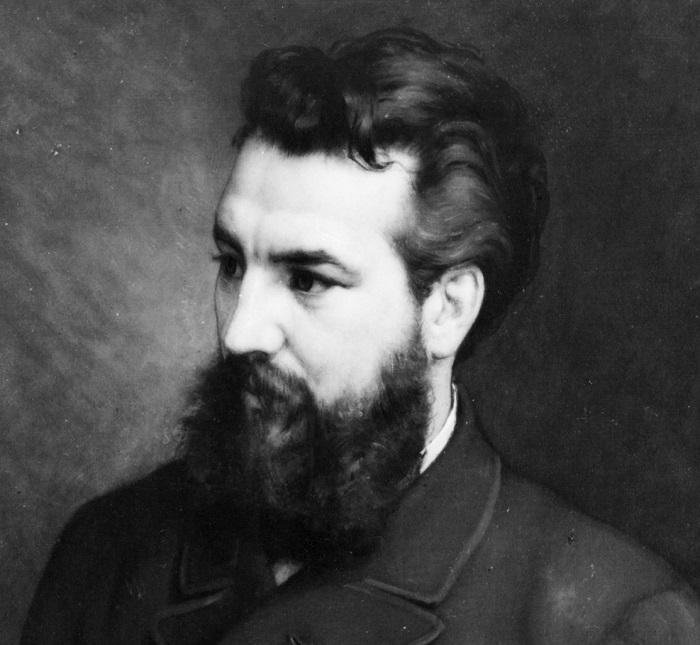Alexander Graham Bell was a Scottish-born American inventor, scientist, and teacher of the deaf who is best known for inventing the telephone in 1876. But how did he acquire his knowledge and skills that led him to such a remarkable achievement? In this article, we will explore his education and learning experiences from his childhood to his adulthood.
Early Years in Scotland
Bell was born on March 3, 1847, in Edinburgh, Scotland. He came from a family of elocutionists and speech teachers. His father, Alexander Melville Bell, was a phonetician who developed a system of visible speech to help deaf people learn to speak. His mother, Eliza Grace Symonds Bell, was almost deaf herself and had a keen interest in music and art.
Bell received most of his early education at home from his father. He learned to read and write at an early age and showed a natural curiosity for how things worked. He also developed a talent for mimicry and ventriloquism. He enjoyed experimenting with sound and voice, making musical instruments out of household objects, and playing with puppets.
He attended formal school only briefly. He went to a private school for one year when he was 10 years old but did not enjoy the rigid curriculum. He then enrolled at the Royal High School of Edinburgh when he was 11 but did not excel academically. He preferred to spend his time reading books on science, history, poetry, and philosophy at the school library or at home.
He also had a passion for solving problems. When he was 12 years old, he invented a device that could quickly remove husks from wheat grains using rotating paddles and nail brushes. He made this device to help his friend’s father who owned a flour mill.
Moving to London
In 1865, when Bell was 18 years old, his family moved to London after his older brother Melville died of tuberculosis. His younger brother Edward had also died of the same disease three years earlier. Bell hoped that the change of environment would improve his health as well.
In London, Bell continued his self-education by attending lectures on various subjects at the University College London (UCL). He also joined the UCL’s Philosophical Society where he met other young intellectuals who shared his interests.
He also became more involved in his father’s work with deaf people. He learned how to use visible speech symbols to teach deaf students how to articulate sounds. He also met some influential figures in deaf education such as Sarah Fuller, John Hitz, Thomas Gallaudet, and Helen Keller.
Immigrating to Canada
In 1870, Bell’s family decided to immigrate to Canada after his father accepted an invitation from one of his former students who had moved there earlier. They settled in Brantford, Ontario, where they bought a farm. Bell enjoyed living in Canada where he found more freedom and opportunities than in Britain. He explored nature around him and learned about Native American culture from some local tribesmen.
He also continued his experiments with sound and electricity using materials he found on the farm or bought from nearby towns. He built telegraph lines between different buildings on the property and devised ways to transmit multiple messages over one wire using different tones or currents. He also became interested in human speech production after reading about Hermann von Helmholtz’s research on sound vibrations in air cavities such as resonators or vocal cords.
Teaching in Boston
In 1871, Bell moved to Boston where he accepted a position as a teacher at the Boston School for Deaf Mutes (now known as Horace Mann School for the Deaf). He also taught at two other schools for deaf children: Clarke School for the Deaf (now known as Clarke Schools for Hearing and Speech) in Northampton, Massachusetts, and American School for the Deaf (ASD) in Hartford, Connecticut. He used visible speech as well as oral methods to teach his students how to speak and understand spoken language. He also encouraged them to pursue higher education and careers beyond their disability. One of his most famous students was Mabel Hubbard, the daughter of Gardiner Greene Hubbard, a prominent lawyer and philanthropist who later became his father-in-law and business partner. Bell fell in love with Mabel who had lost her hearing at age five due to scarlet fever. They married in 1877 and had four children.
While teaching at the Boston School for Deaf Mutes, Bell became interested in improving the telegraph system. He saw that the telegraph could transmit only one message at a time over a single wire, and he wanted to find a way to send multiple messages over the same wire simultaneously. He also believed that he could use the same principles of sound and vibration that he had learned from his work with the deaf to transmit speech over a wire.
In 1874, Bell met Thomas A. Watson, a machinist who was working at the electrical shop where Bell was conducting his experiments. Watson became Bell’s assistant and partner in developing the telephone. They worked together for two years, conducting countless experiments and making numerous improvements to the device. On March 10, 1876, Bell made the first successful telephone transmission, saying to Watson, “Mr. Watson, come here, I want to see you.” Watson heard Bell’s voice clearly through the telephone receiver in another room and rushed to his side.
The invention of the telephone revolutionized communication and made Bell a wealthy and famous man. He continued to work on other inventions throughout his life, including the photophone, an early device for transmitting sound on a beam of light, and the graphophone, a type of early phonograph. He also continued to work with the deaf, developing new methods and tools for teaching them to speak.
Bell died on August 2, 1922, at his estate in Baddeck, Nova Scotia, Canada. He left behind a legacy of innovation and education that continues to inspire new generations of inventors and educators.
Conclusion
Alexander Graham Bell’s education was a mixture of formal schooling and self-directed learning. Although he did not excel academically, he had a curious and inventive mind that led him to make significant contributions to the fields of speech, communication, and education. His experiences with the deaf and his fascination with sound and vibration ultimately led him to invent the telephone, which changed the world. Bell’s life and work remind us of the importance of curiosity, experimentation, and lifelong learning in achieving great things.
References:










